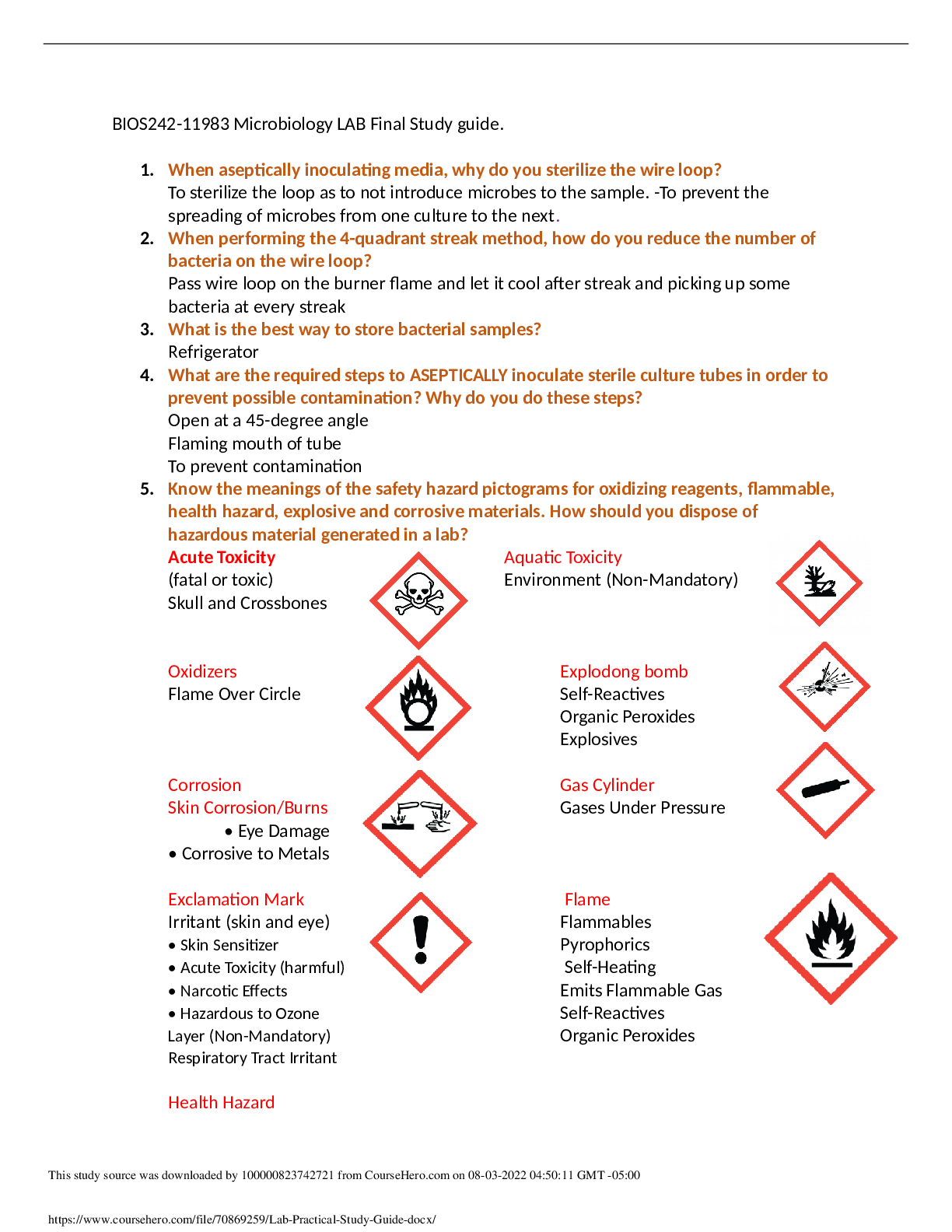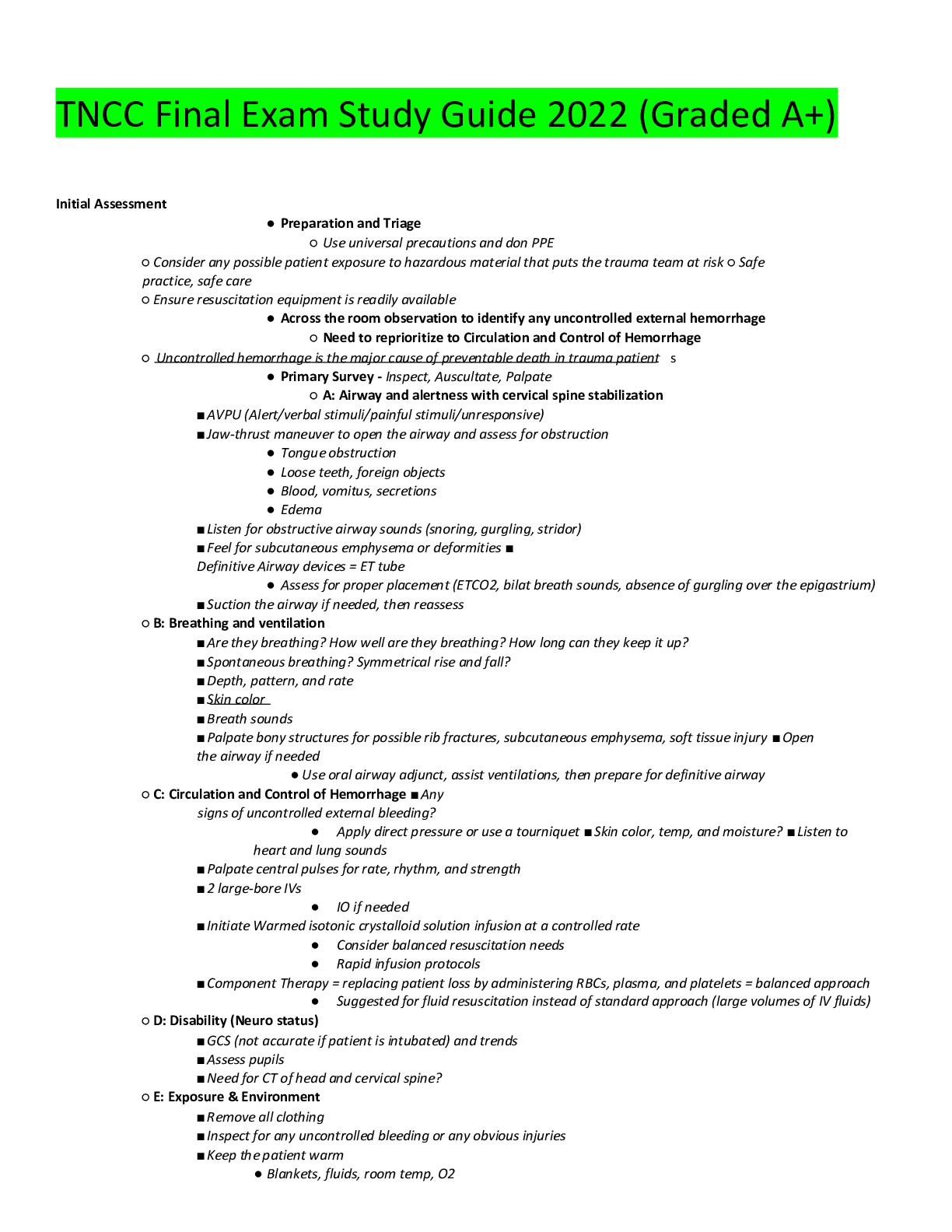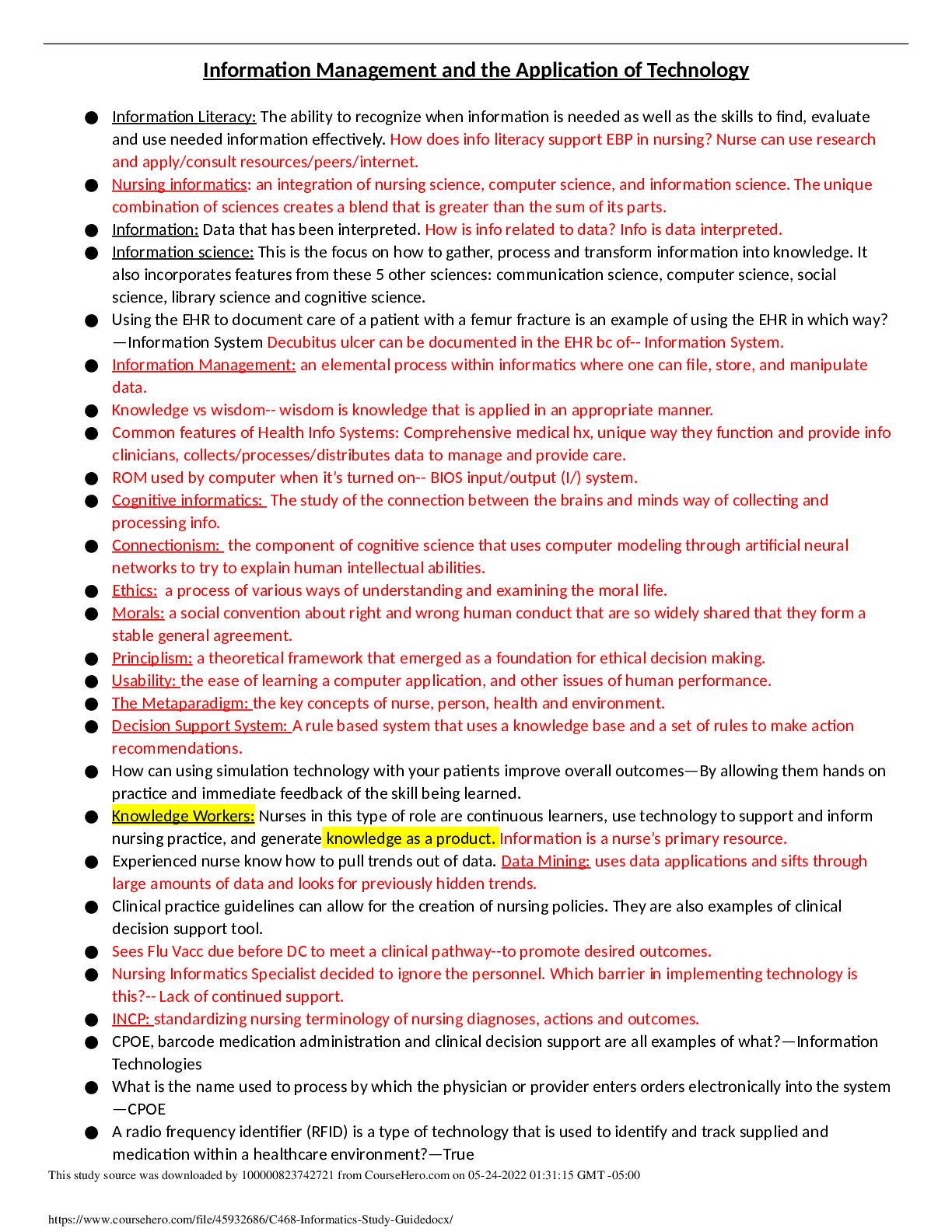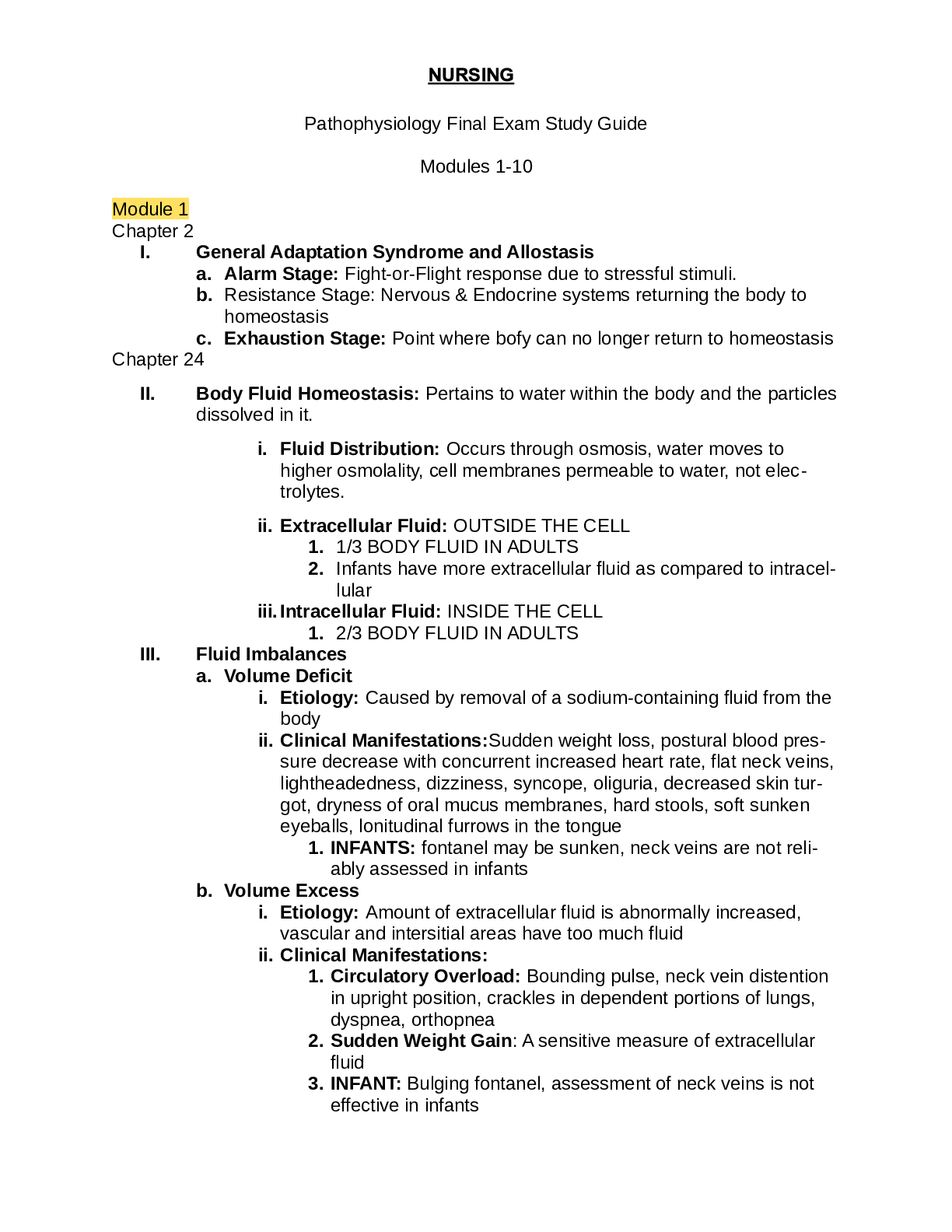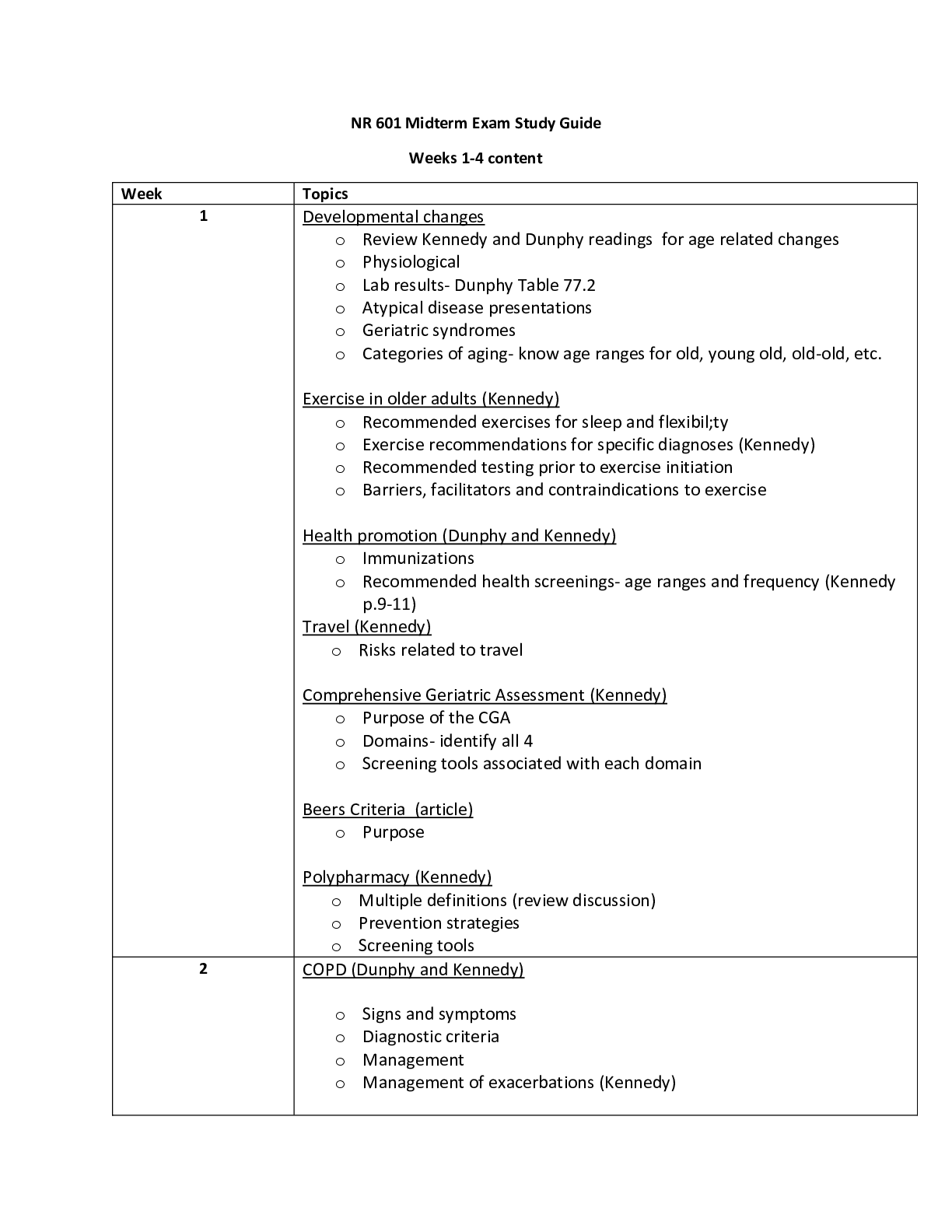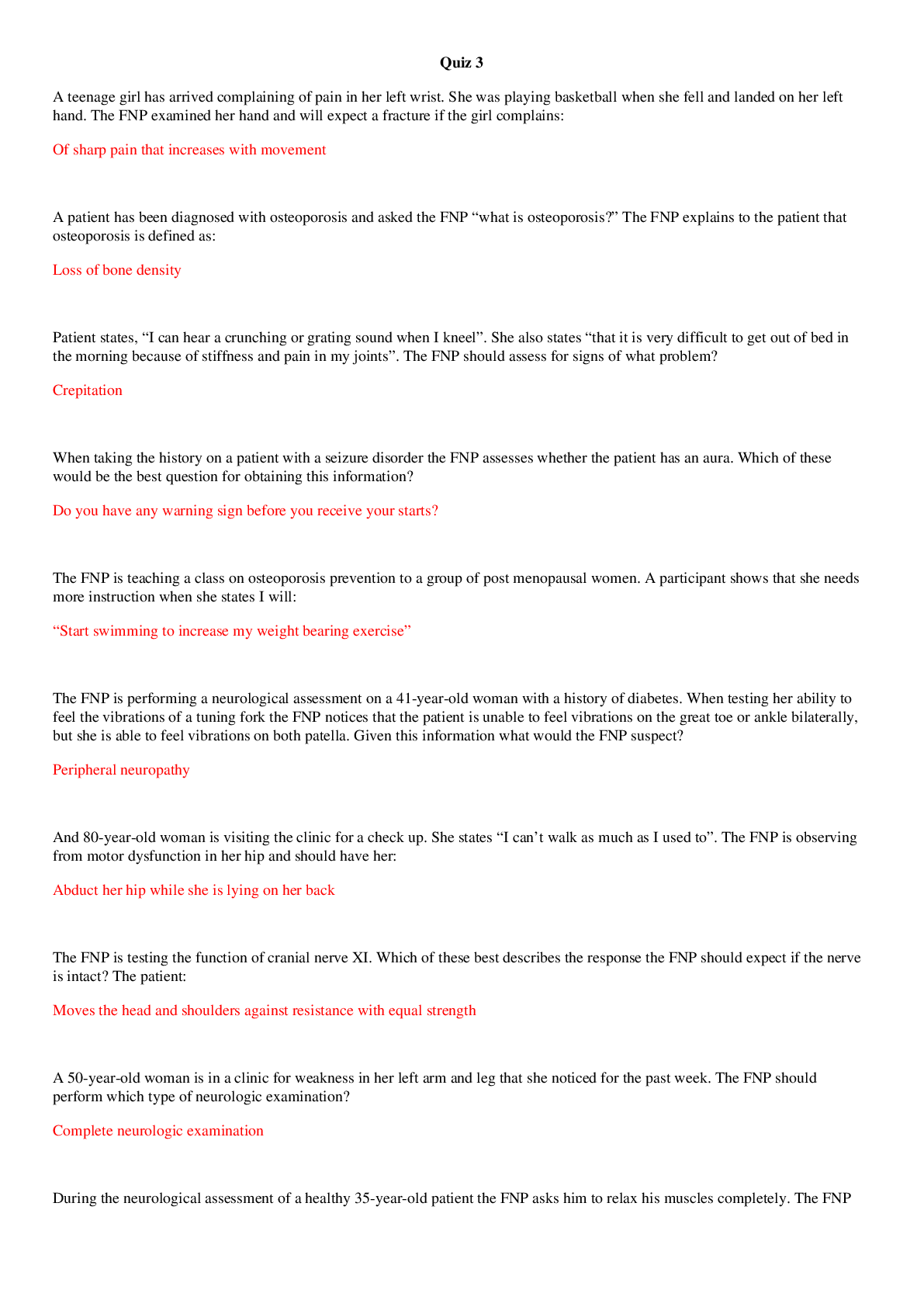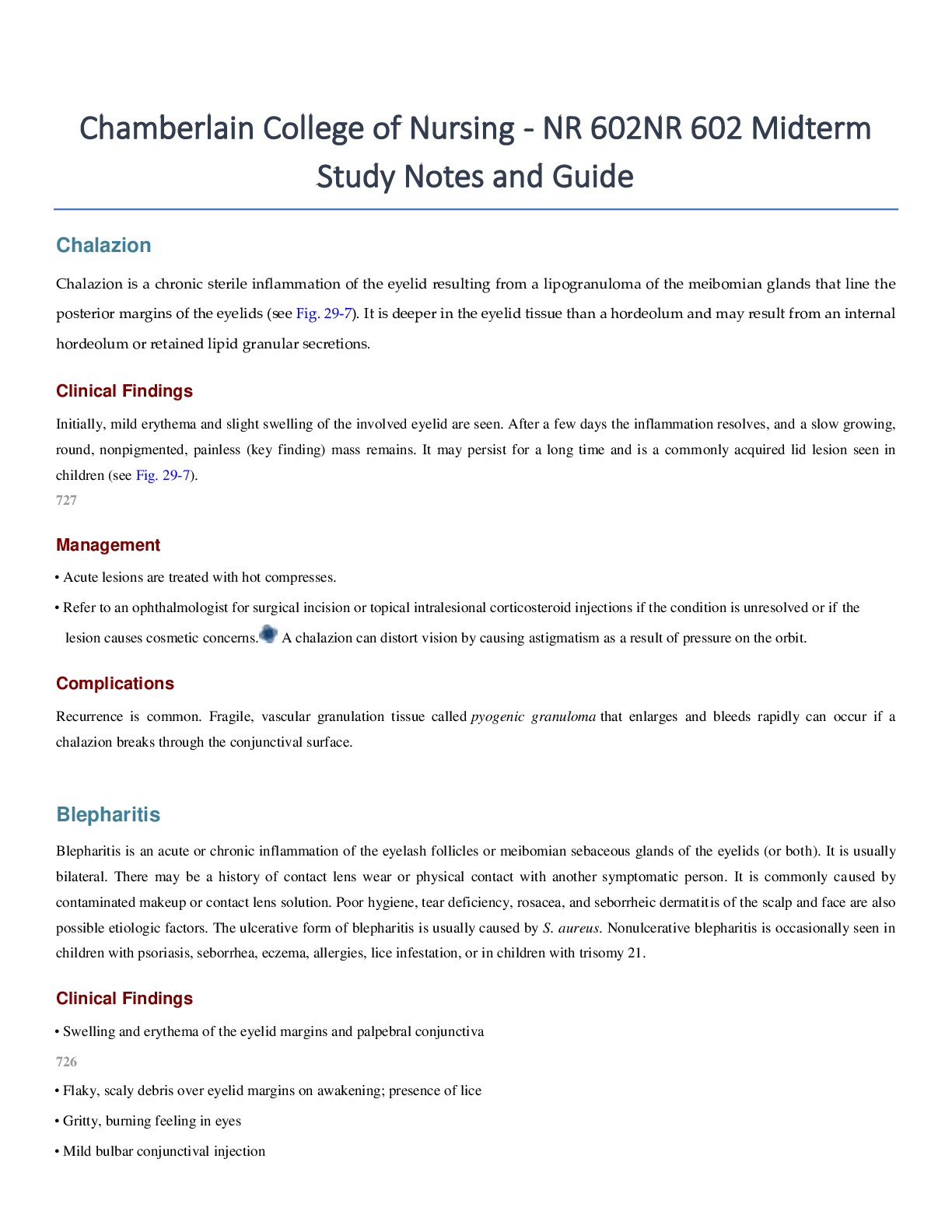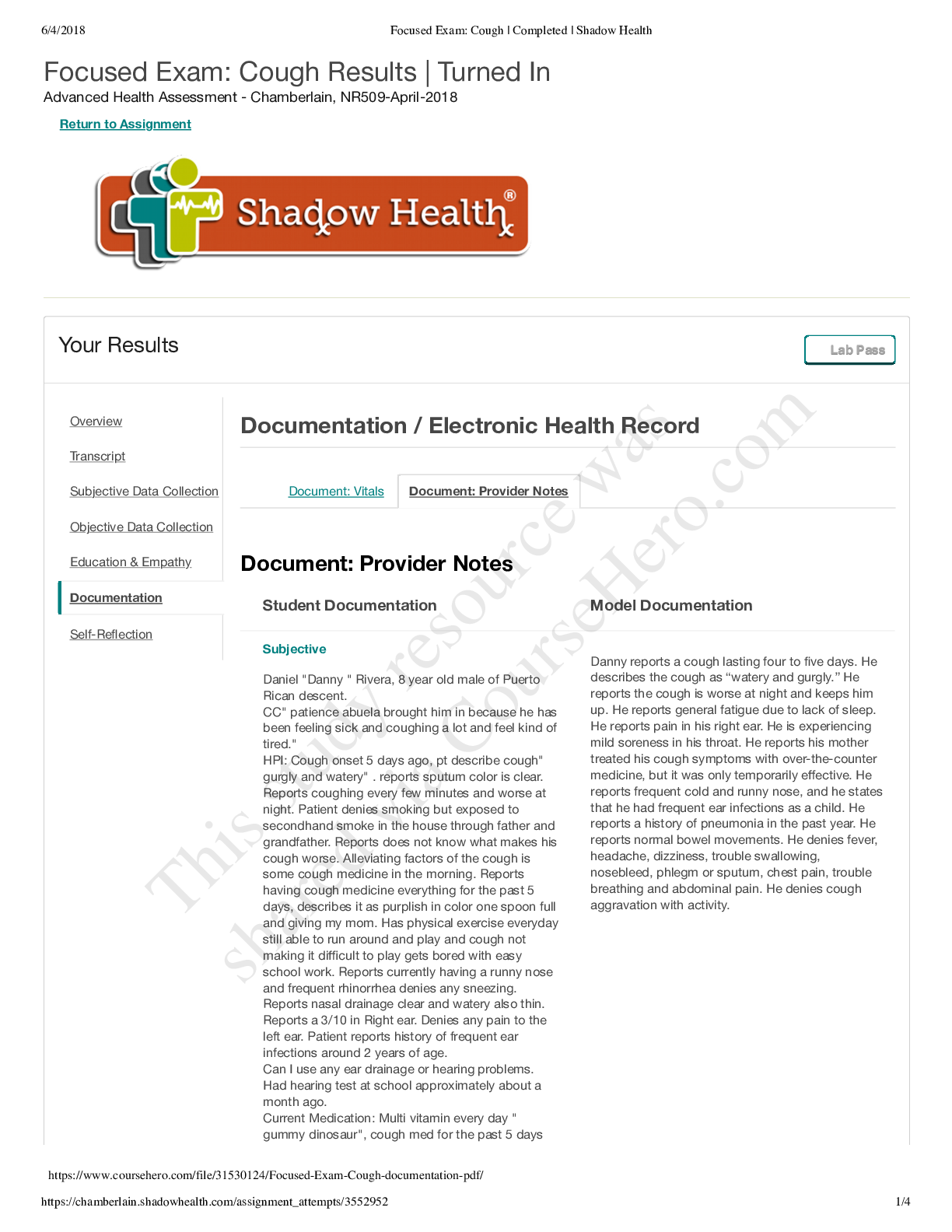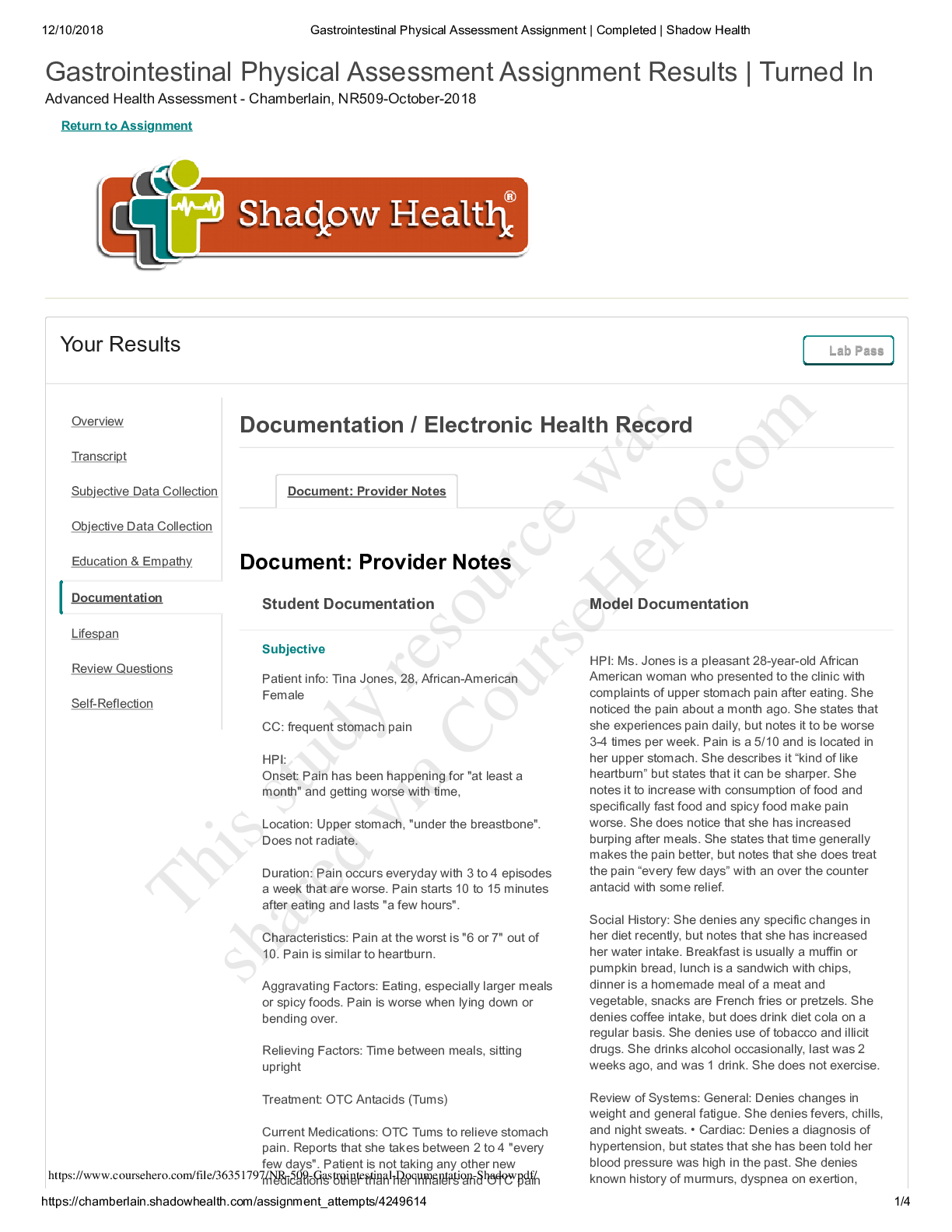*NURSING > STUDY GUIDE > Med Surg Exam 4 Complete study guide|Galen College of Nursing - NUR 242 MS Exam 4 (All)
Med Surg Exam 4 Complete study guide|Galen College of Nursing - NUR 242 MS Exam 4
Document Content and Description Below
Med Surg Exam 4 Unit 9: Caring for the patient common perfusion problems CARDIOVASCULAR ASSESSMENT: Perform a complete cardiovascular assessment. As HTN is a risk factor for CAD, assess BP in ... both arms. Check for all major pulses as well as capillary refill and temperature of lower extremities. Prolonged capillary filling (>3 seconds in young to middle-aged adults; >5 seconds in older adults) indicates poor circulation. Listen with a stethoscope or use a Doppler to assess for the presence of a bruit, which is heard as a swishing sound as blood attempts to push through a narrowed artery. Bruits often occur in the carotid, aortic, femoral, and popliteal arteries. Obtain information about family history and modifiable risk factors, including eating habits, lifestyle, and physical activity levels. Ask about a history of smoking and how much alcohol is consumed each day. Assess body mass index (BMI) and weight. DYSRHYTHMIAS Dysrhythmias are disorders of the electrical conduction of the heart that result in disturbances in the heart rate and/or heart rhythm. Dysrhythmias may alter blood flow and lead to hemodynamic changes. Sinus bradycardia has a heart rate less than 60 BPM. Rates < 45 BPM cause syncope, dizziness, weakness, confusion, diaphoresis, SOB, and angina. The treatment of choice is atropine but an external pacemaker may be needed. Patient must avoid strenuous physical activity following placement of pacemaker to allow time to settle. Nurse should withhold beta blockers. Ventricular fibrillation (VF), a life-threatening dysrhythmia, is the leading cause of sudden cardiac death. A patient in VF has no cardiac output and must receive intervention promptly. This rhythm is fatal if not successfully treated within 3 to 5 minutes. Begin CPR, defibrillate as soon as possible, and administer antidysrhythmics. Ventricular tachycardia (VT) is a life-threatening dysrhythmia that occurs when an irritable ectopic focus in the ventricles takes over as the pacemaker. If a pulse is present and no change in LOC, synchronized cardioversion may be needed to restore NSR. If the patient in VT does not have a pulse, treat as v-fib and defibrillate. HEART FAILURE Heart failure usually begin [Show More]
Last updated: 2 years ago
Preview 1 out of 15 pages
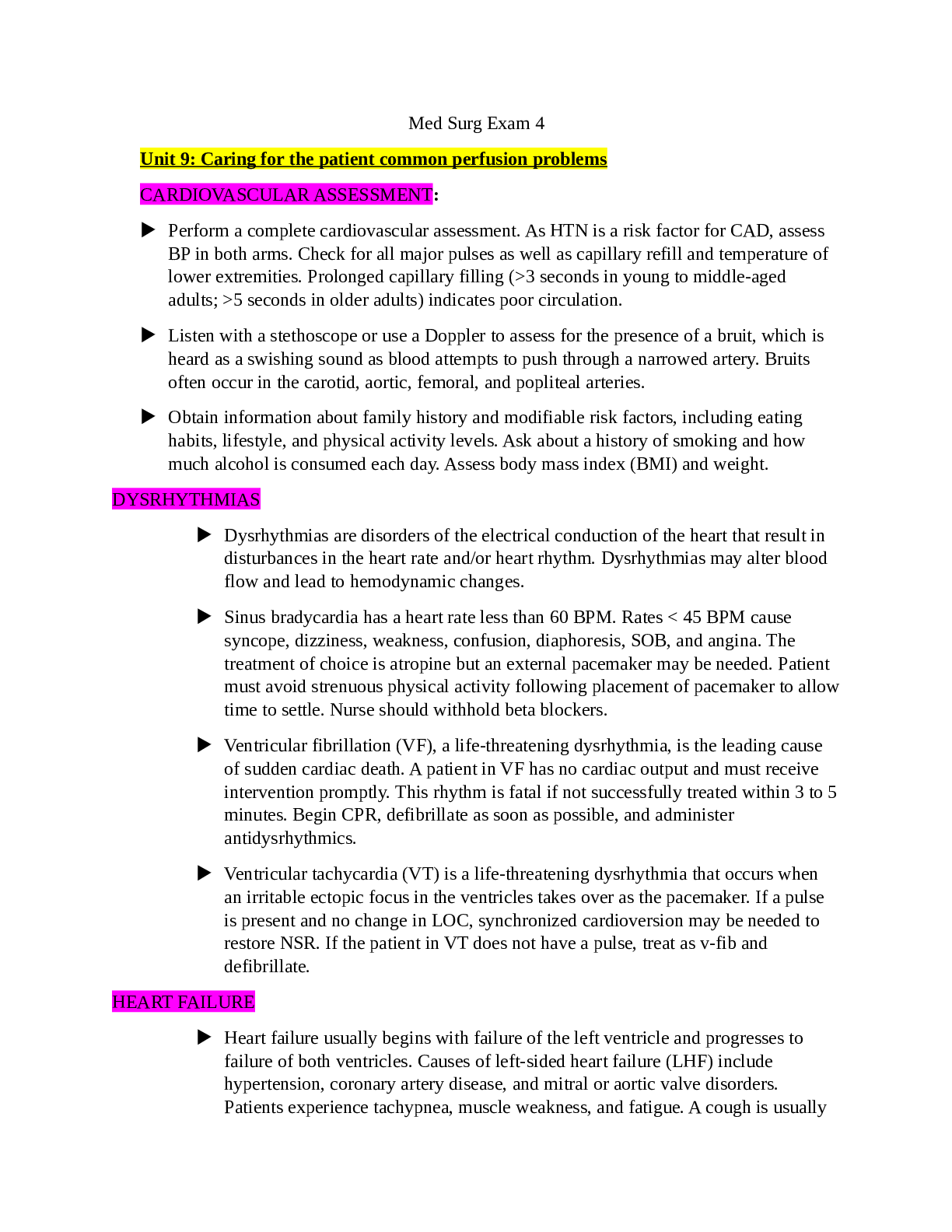
Buy this document to get the full access instantly
Instant Download Access after purchase
Buy NowInstant download
We Accept:

Reviews( 0 )
$9.50
Can't find what you want? Try our AI powered Search
Document information
Connected school, study & course
About the document
Uploaded On
Aug 13, 2022
Number of pages
15
Written in
Additional information
This document has been written for:
Uploaded
Aug 13, 2022
Downloads
2
Views
562




